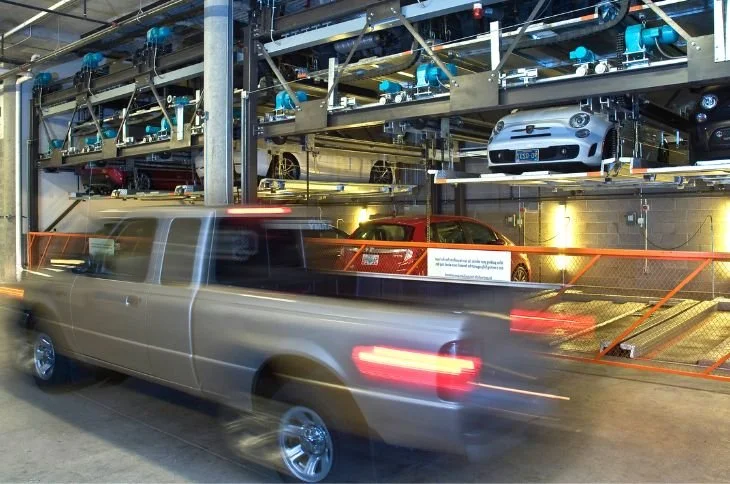Mixed-use parking structures have many purposes, including commercial business use, residential access, retail parking, and more. Mixed-use parking spaces typically see more traffic than single-use facilities due to their larger audience. Because of this, there are more factors to consider when designing parking solutions for mixed-use spaces. If you’re planning a multi-use facility, remember these tips so that you can optimize your operations.
Prioritize Safety
Safety becomes a significant issue and a priority when drivers and pedestrians share the same space. Consider how pedestrians will navigate your structure and give them clear routes to take so that they can avoid vehicle traffic and parking zones. Some parking structures can experience circulation issues, which is key to avoid due to vehicle emissions. Consider whether your facility qualifies as an open or enclosed structure and adjust its circulation measures from there. Additionally, lighting is another key factor for parking garage safety. Ensure that your facility has sufficient lighting for navigation for those both inside and outside of vehicles.
Keep the Design Functional
Parking structures for mixed-use spaces can quickly become dysfunctional if designers lose sight of the patron experience. Prioritize functional features such as an easily navigable layout, plenty of parking space, parking amenities, and more. Ramps and clearance are also important to consider, as these factors can limit the types of vehicles that have access to your structure.
Another thing to consider when designing a structure for functionality is density. Mixed-use buildings attract many groups, which means they’ll require more parking spaces and solutions to house these additional visitors. Installing mechanical stack parking and other solutions can help you save space and accommodate more people.
Consider Durability and Maintenance
Think about the future of your mixed-use parking space and consider its durability. Mixed-use spaces experience increased pedestrian and vehicle traffic, which can lead to more prominent wear and tear than other buildings. Keeping up with maintenance will also help minimize the probability of safety hazards such as cracks or uneven surfaces. Caring for the structure also helps your building maintain a put-together aesthetic, forming good first impressions for visitors. Fortunately, with systems such as mechanical stack parking, you can also decrease the wear and tear from vehicles in the parking portion of your shared space.
Now that you know what to consider when designing parking for mixed-use spaces, you might wonder how to put these considerations into practice. You can start by increasing the capacity and safety of your facility with mechanical stack parking. Learn more about these modern parking solutions here at Harding Steel.

